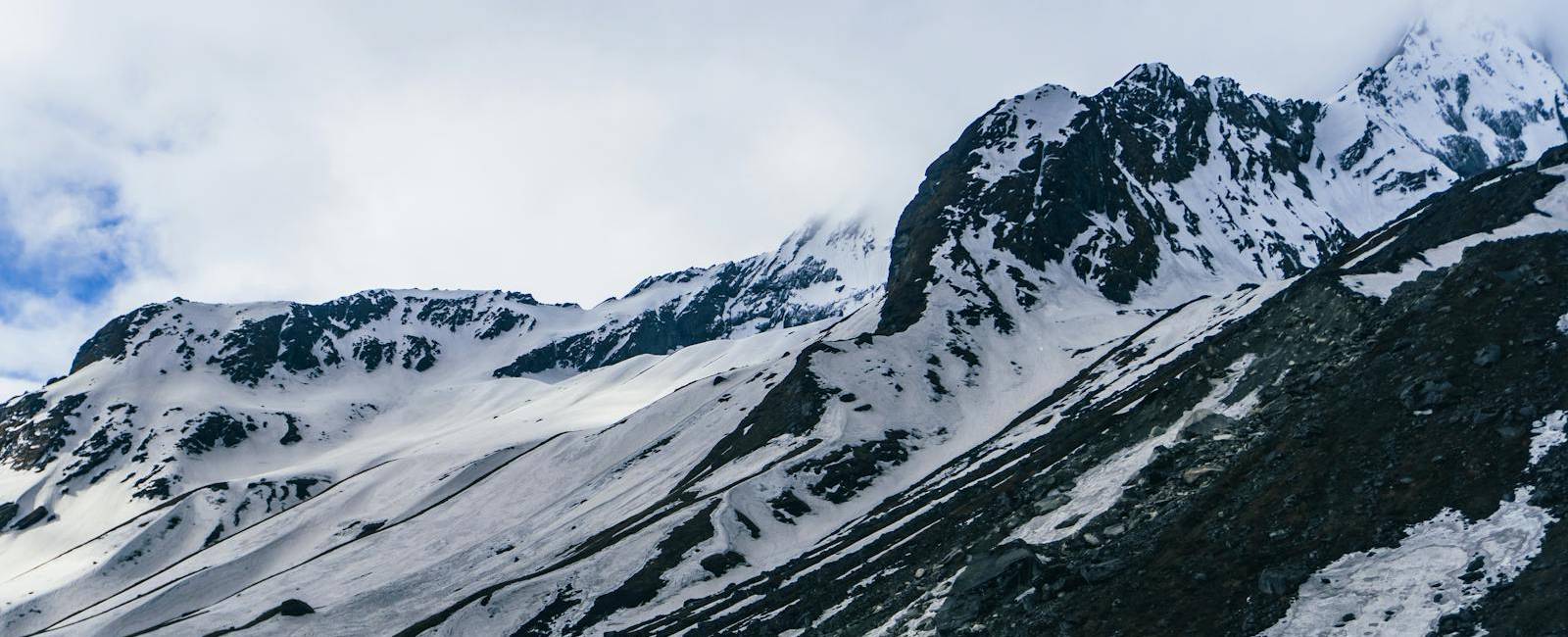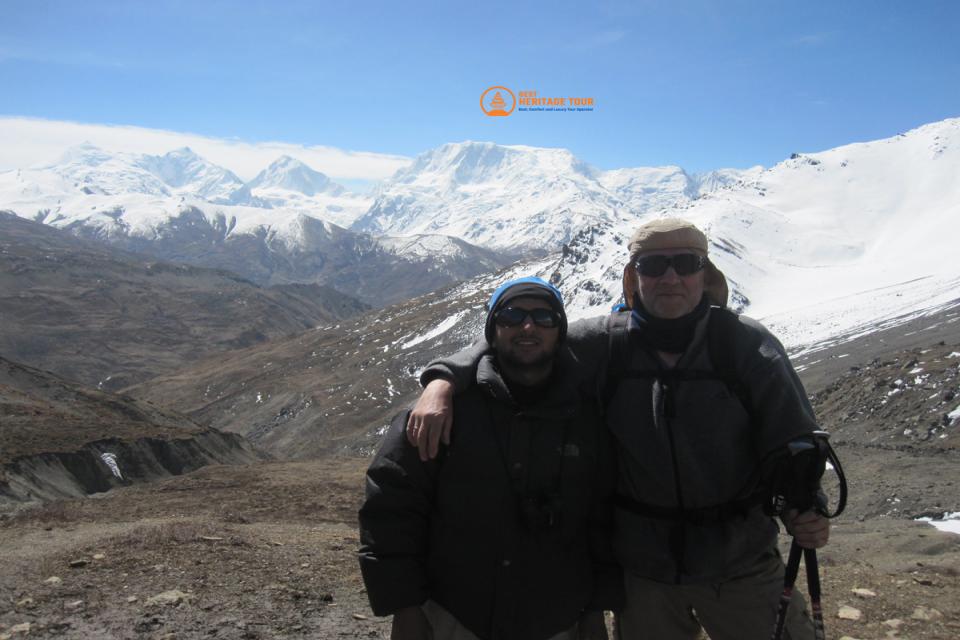Hidden between the better-known Annapurna and Manaslu regions lies a remote and mystical area that few travelers have heard of - Nar Phu Valley. Tucked away in the rugged northern corners of Nepal, close to the Tibetan border, the Nar Phu Valley offers an extraordinary blend of raw Himalayan landscapes, authentic Tibetan culture, and secluded adventure.
Unlike the bustling trekking routes of Everest and Annapurna, this valley remains relatively untouched. It's a place where time seems to stand still - where stone villages cling to cliffs, prayer flags flutter in the wind, and yaks outnumber tourists.
For trekkers seeking a more off-the-beaten-path experience in the Himalayas, the Nar Phu Valley Trek is the perfect choice.
What Makes Nar Phu Valley Special?
1. Ancient Tibetan Culture in Its Purest Form
Nar Phu Valley is home to two main villages - Nar and Phu - both of which reflect deep-rooted Tibetan heritage. Locals here speak a dialect of Tibetan, wear traditional dress, and practice centuries-old rituals tied to Buddhism. Unlike other trekking routes where modernization has crept in, Nar and Phu remain authentic and culturally intact.
You'll encounter ancient monasteries, including the remarkable Tashi Lhakhang Gompa, chortens, mani walls, and homes built from stone and mud. The spiritual vibe in the valley is profound and unlike anywhere else in Nepal.
2. Jaw-Dropping Himalayan Landscapes
From narrow canyons and towering cliffs to glacial valleys and high alpine meadows, the terrain in Nar Phu Valley is nothing short of spectacular. Snow-capped peaks like Himlung Himal (7,126m), Annapurna II, and Pisang Peak dominate the skyline.
The trek takes you through rocky gorges, windswept plateaus, high passes like Kang La (5,306m), and ancient trade routes once used by salt traders and yak herders. Whether you’re walking through pine forests or stepping over ice-fed streams, every moment is a visual delight.
3. Solitude in a Crowd-Free Trail
One of the best things about the Nar Phu Valley Trek is the lack of crowds. While popular treks like Annapurna Circuit or Everest Base Camp can feel overcrowded, Nar Phu remains tranquil. On some days, you might only meet a handful of fellow trekkers or none at all. This makes it perfect for those craving a quiet, meditative, and immersive trekking experience.
The Nar Phu Valley Trek - What to Expect
Overview of the Trek
The Nar Phu Valley Trek is a restricted area trek that typically takes 8-12 days, depending on the route. Most treks begin at Koto, a small settlement in the Annapurna region, and finish after crossing Kang La Pass, eventually reconnecting with the Annapurna Circuit near Ngawal or Manang.
Key Highlights of the Trek
-
Exploring the medieval villages of Nar and Phu
-
Visiting Tashi Lhakhang Monastery, one of the oldest Buddhist gompas in the region
-
Crossing Kang La Pass with panoramic Himalayan views
-
Spotting blue sheep, yaks, and Himalayan griffons
-
Interacting with the warm and hospitable locals
Trek Difficulty and Duration
This is a moderate to challenging trek, best suited for those with a basic level of trekking experience and decent fitness. While the paths aren't technically difficult, the altitude and remoteness add an extra layer of challenge. Daily walking hours range from 5 to 8 hours, and you’ll reach elevations over 5,000 meters.
Permits Required
Being a restricted area, you'll need:
-
Nar Phu Restricted Area Permit (RAP)
-
Annapurna Conservation Area Permit (ACAP)
-
Trekkers’ Information Management System (TIMS)
You must trek with a licensed guide and in a group of at least two trekkers. This is where a trusted trekking agency like Best Heritage Tour becomes essential.
Best Time to Visit Nar Phu Valley
The ideal seasons are:
-
Spring (March-May): Blooming rhododendrons, clear skies
-
Autumn (September-November): Crisp weather, vibrant festivals
Avoid the monsoon months (June to August) and the extreme cold of winter (December to February), when the trails may be blocked by snow.
Cultural Insights from Nar and Phu Villages
One of the most memorable aspects of the Nar Phu Valley Trek is the rare chance to immerse yourself in an ancient Tibetan culture that has remained largely untouched by modernity. The villages of Nar and Phu feel like living museums - settlements suspended in time, preserving unique Himalayan traditions and beliefs.
Phu Village: A Fortress among the Hills
Phu is the first of the two major villages you'll encounter, and reaching it feels like entering another world. With stone-built homes stacked along a steep ridge, Phu resembles a medieval fortress. The locals live a semi-nomadic lifestyle, relying on yak herding, subsistence farming, and traditional medicine.
You’ll witness:
-
Prayer ceremonies at Tashi Lhakhang Gompa, which reportedly received blessings from the 10th Karmapa.
-
Children running around in traditional robes.
-
Women spinning wool or making yak cheese.
-
Age-old customs like animal sacrifice during festivals to appease local deities.
Nar Village: A Vibrant and Spiritual Stop
Nar sits slightly lower in elevation and is more compact, with closely packed houses and a strong communal spirit. The people of Nar are deeply spiritual, and their daily lives revolve around their Buddhist beliefs, monastery visits, and seasonal rituals.
During your stay, you'll likely be invited into homes, offered butter tea and tsampa, and treated to genuine hospitality that comes from the heart.
The cultural isolation and warmth of these communities offer a profound human connection that many trekkers say is the highlight of their journey.
Nature & Landscape of Nar Phu Valley
Nar Phu Valley is not just culturally rich - it’s a natural paradise sculpted by ice, wind, and time. Its landscapes are strikingly diverse, making the trek visually thrilling from start to finish.
High Altitude Drama
As you ascend from Koto, dense pine forests give way to deep gorges, narrow canyons, and dry alpine ridges. Eventually, you reach a windswept valley surrounded by towering snow peaks and rock spires. The shifting terrain keeps the scenery dynamic and dramatic.
Glaciers, Cliffs, and Peaks
-
The glaciers of Himlung Himal glisten in the distance.
-
You’ll hike across moraine fields and past frozen waterfalls in early spring.
-
Towering above you are Annapurna II, Gangapurna, and Pisang Peak, offering a stunning 360-degree Himalayan amphitheater.
Wildlife Encounters
Due to its remoteness and low human activity, Nar Phu Valley hosts unique Himalayan wildlife. You may spot:
-
Blue sheep (bharal) grazing on cliffs
-
Himalayan griffons soaring overhead
-
Marmots scurrying across rocky meadows
-
If lucky, even signs of the elusive snow leopard
Nar Phu Valley vs. Other Treks in Nepal
So why choose the Nar Phu Valley Trek over more popular routes like Everest Base Camp or the Annapurna Circuit?
|
Feature |
Nar Phu Valley |
Everest Base Camp |
Annapurna Circuit |
|---|---|---|---|
|
Crowds |
Very few trekkers |
Extremely popular |
Moderate |
|
Culture |
Raw Tibetan culture |
Sherpa lifestyle |
Mixed Gurung & Manangi |
|
Scenery |
Rugged, high-altitude desert |
Glaciers & big peaks |
Green valleys to high passes |
|
Difficulty |
Moderate to challenging |
Moderate |
Moderate |
|
Best for |
Solitude & culture |
Bucket-list seekers |
Scenic variety |
If you crave isolation, cultural depth, and wild terrain, Nar Phu delivers what few treks can.
Essential Travel Tips for Nar Phu Valley Trek
1. Physical Preparation
This is not a technical trek, but the altitude and remote conditions can be tough. Start cardio training and leg workouts at least 4–6 weeks in advance. Practice hiking with a backpack and get comfortable walking on uneven terrain.
2. What to Pack
Essentials include:
-
Warm layers (thermals, down jacket)
-
Windproof outer shell
-
Trekking boots (broken-in)
-
Sleeping bag (rated for -10°C or lower)
-
Trekking poles
-
Headlamp
-
Water purification tablets or bottle
-
Basic first aid kit with altitude sickness meds
-
Snacks and energy bars
3. Altitude Sickness
You’ll reach elevations above 5,000 meters. Acclimatize properly, hydrate often, and don’t rush the ascent. Symptoms like headache, nausea, or dizziness should not be ignored.
4. Food and Accommodation
-
Teahouses are basic but comfortable, offering warm meals like dal bhat, thukpa, and momos.
-
Electricity may be solar-powered or limited; bring a power bank.
-
Wi-Fi and phone signals are rare - embrace the digital detox!
Why Choose a Guided Trek to Nar Phu Valley?
Guides Know the Terrain and Culture
Since Nar Phu is a restricted area, independent trekking isn’t allowed. But beyond the rules, going with a licensed guide enriches your experience:
-
They help you understand the region’s culture, beliefs, and geography.
-
They manage logistics - permits, accommodation, food, and safety.
Safety First
In remote, high-altitude terrain, guides provide vital support in case of injury or illness. They’re trained in first aid and know how to respond to emergencies.
Support Local Economy & Travel Responsibly
By booking with a local operator like Best Heritage Tour, you directly support communities in Nar and Phu. The company follows eco-tourism principles, pays fair wages to staff, and minimizes environmental impact.
Final Thoughts: Is Nar Phu Valley Trek Right for You?
The Nar Phu Valley Trek is perfect for trekkers who:
-
Crave solitude over crowds
-
Seek real cultural immersion
-
Are curious about restricted and remote areas
-
Want to explore untouched Himalayan nature
-
Are moderately fit and mentally prepared for a rugged journey
If you're looking for more than just a checklist trek - if you want to feel the spirit of the mountains and share tea with people who still live in harmony with ancient traditions - then Nar Phu Valley is calling you.
And with the 2026/27 trekking season expected to draw increased interest in less-traveled routes, now is the perfect time to explore this hidden gem before the secret gets out.
Plan Your Nar Phu Valley Trek Today
Ready to step off the beaten path and into the heart of Nepal’s untouched Himalayas?
Let Best Heritage Tour handle the logistics while you immerse yourself in one of the most unforgettable trekking adventures Nepal has to offer.
Book Now: Nar Phu Valley Short Trek Package
Call Us: +977-9851149197
Email: info@bestheritagetour.com / bestheritagetour@gmail.com
Website: www.bestheritagetour.com
Travel not to escape life, but so life doesn’t escape you. Let Nar Phu Valley show you how vast and vivid the world can be.
Author: Best Heritage Tour
Date: 1st August, 2025


